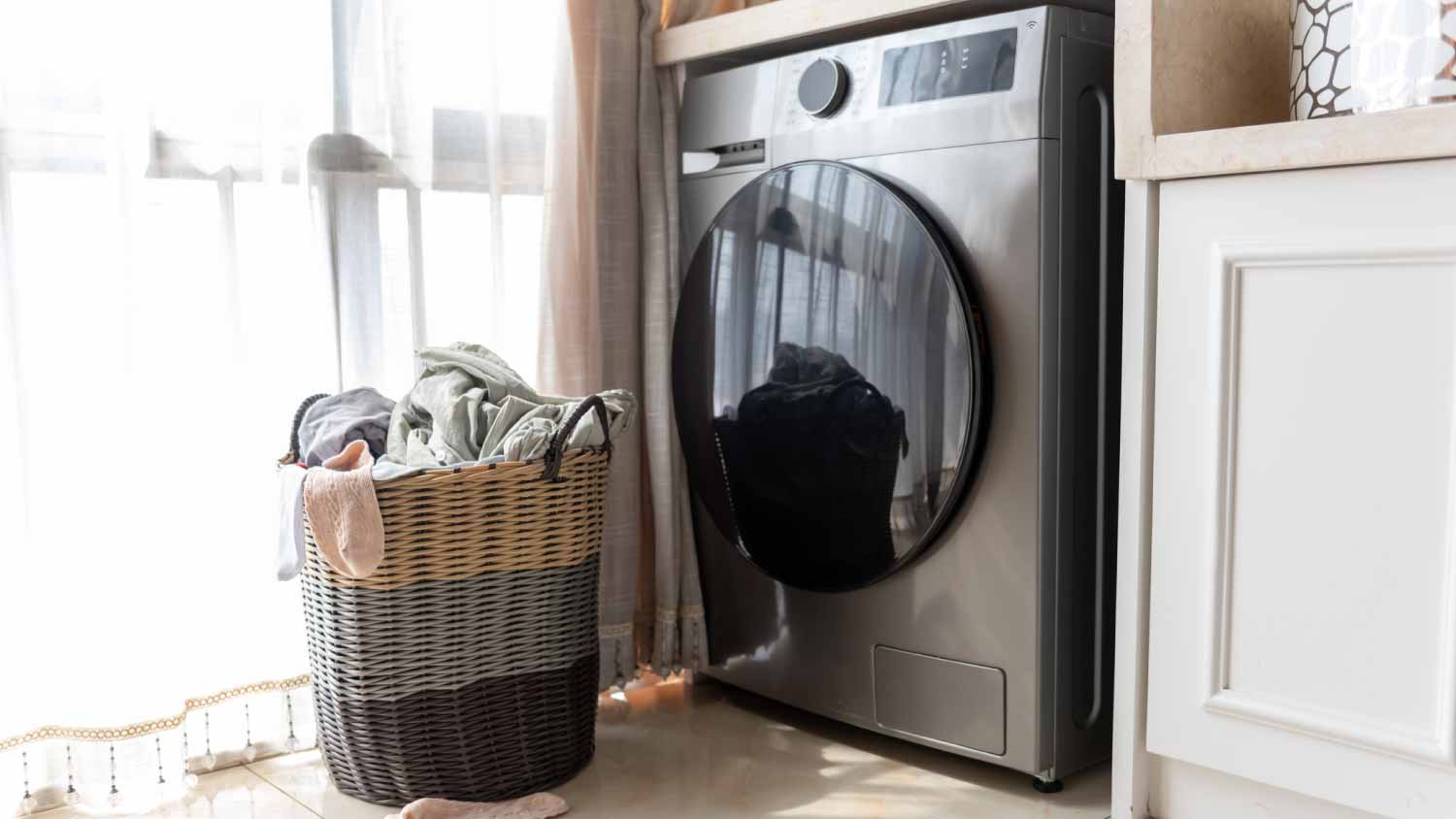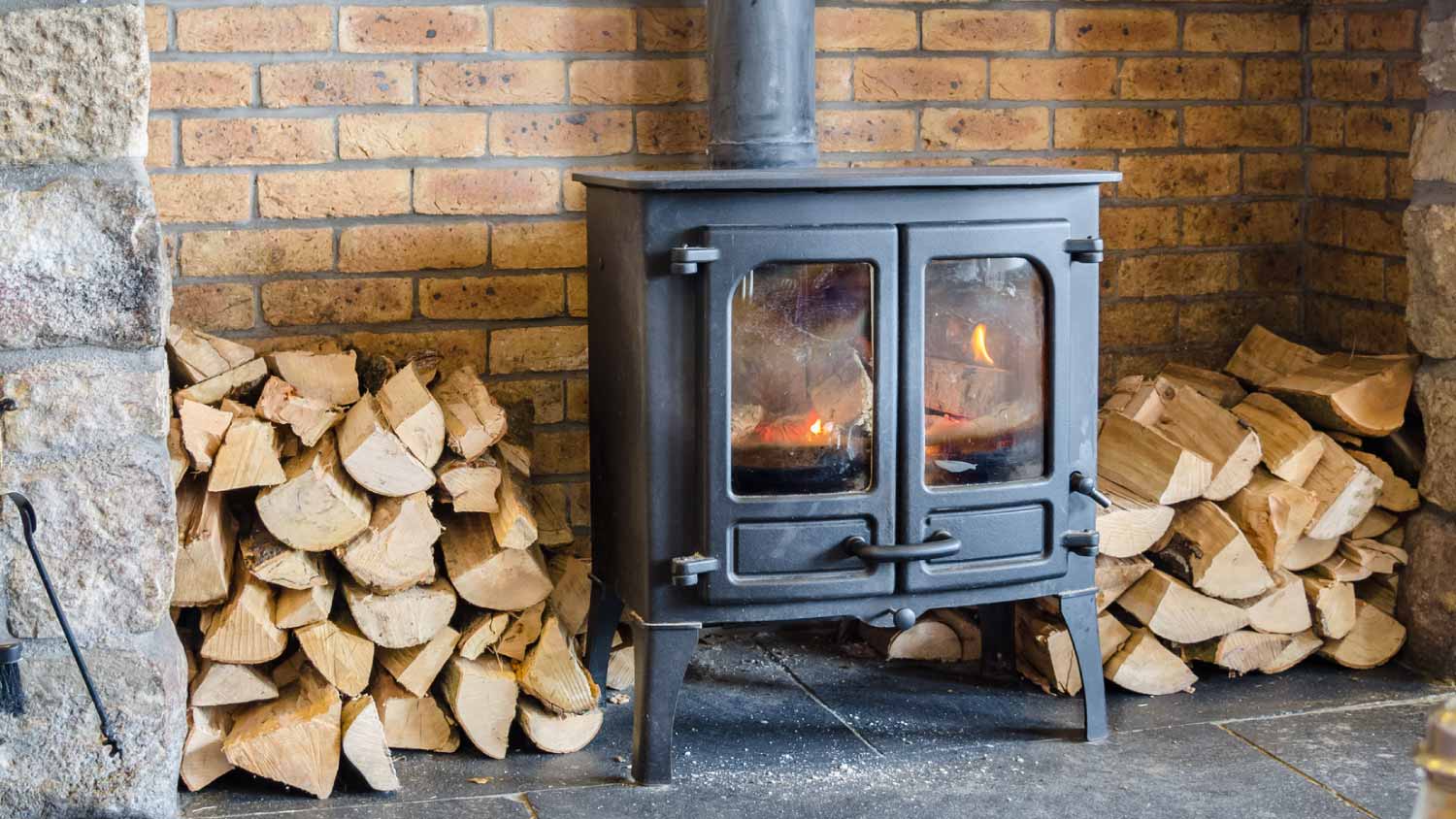Why an Exhaust Fan is a Must-Have Feature in Your Kitchen
Kitchen exhaust fans help keep the air clean when you're cooking


When you cook, your gas stove (and your soon-to-be dinner) sends heat, odors, and humidity into the air. Enter kitchen exhaust fans, also called kitchen hoods, exhaust hoods, or range hood devices. These motorized fan systems are located above ranges or stovetops and help capture these emissions to help ensure your home’s air is as clean as possible.
Read on to learn more about how this useful kitchen ventilation system works.
How Exhaust Fans Work
Just like a bathroom vent, your kitchen fan filters air from the room outside. Without it, you’d have to cook in a cloud of smoke and grease—which is no good for air quality or overall kitchen odor (you know, those dinners you smell for the next two nights).
Most kitchen exhaust hoods (the part that houses the fan) are installed between 24 and 30 inches from the stovetop. When you cook, just flip a switch to begin circulating air up and out. If an exhaust fan is ducted, it will funnel contaminated air into a duct and then release it outside. If an exhaust fan is ductless, it will purify the air via a filter and then recirculate it indoors.
Why Kitchen Exhaust Fans Are Essential

Cooking can reduce the air quality inside your home in several ways.
Gas stoves, in particular, can release air pollutants (nitrogen dioxide, carbon monoxide, and formaldehyde), which can cause health issues over time.
Cooking can emit a lot of moisture, which can build up on the ceiling and walls and cause mold growth.
Cooking without ventilation raises the indoor temperature—a real issue in the summer.
Exhaust fans address all three issues by removing pollutants and moisture and cooling down your space. Although kitchen-renovators often overlook these devices, exhaust fans provide homeowners with significant benefits.
Do I Need a Kitchen Exhaust Fan?
If your kitchen is plagued by excessive fumes, air, and grease, an exhaust fan is a must-have. Some local building codes even require them. But regardless of law, it’s a wise idea to add one to prevent kitchen messes. Gas cooktops in particular emit pollutants that aren’t the best for our indoor air quality. And excess moisture can cause structural damage over time, especially in common rooms like kitchens and bathrooms.
Ducted vs. Ductless Kitchen Exhaust Fans
Ducted (or vented) kitchen exhaust fans are generally more effective than ductless (or recirculating) fans. That’s because they expel heat, moisture, and contaminants into the outside air. Although ductless exhaust fans include powerful filtration systems, they merely recirculate the air.
However, ducted exhaust fans do have some downsides. This type of system is pricier to purchase and install and runs on average between $250 to $500 to install ductwork to the exterior of your home. This cost is in addition to the average kitchen exhaust fan price around $750, according to HomeAdvisor.
If your cooking surface is located on an island, it will cost more money to run a new duct that vents to the outside of your home. Expect to spend $10 to $20 per linear foot for new ductwork, so the greater the distance the ductwork needs to run, the higher the price. Or, if you live in an apartment or a home without existing ductwork, opting for a ducted system might be above your budget. After all, you’ll need to spring for more linear feet of ductwork.
Plus, a ducted exhaust hood won’t work in every kitchen design-wise. For instance, if your kitchen has a low ceiling, a hood might not fit or might make your space feel cramped.
Updraft vs. Downdraft Kitchen Exhaust Fans
Many exhaust fans are updraft, meaning they pull heat, moisture, and air particles up and into a hood located above the cooking surface. Updraft exhaust fans can be ducted or ductless, though they are more often ducted.
Other exhaust fans are downdraft. These devices pull contaminated air down through a vent located in the middle or back of the cooking surface and funnel it outside via a duct. Downdraft exhaust fans can also be ducted or ductless.
Updraft exhaust fans are generally more effective since they pull in more air—the ventilation hood covers the entire cooking surface pulling in smoke and heat.
Three Types of Filters
Whether ducted or ductless, range hoods consist of a skirt or capture panel (to contain rising gases), a grease filter, and a fan.
Filters come in three types:
Mesh (made of aluminum)
Baffle (made of steel and aluminum)
Charcoal
Mesh and baffle filters are used in ducted and ductless systems and need to be cleaned often. Charcoal filters are mostly used in ductless systems and must be replaced regularly.
Installing a Kitchen Exhaust Fan
You can DIY your kitchen range hood installation. However, since putting in a kitchen exhaust fan is complex and involves both HVAC and electrical work, it’s best to hire a kitchen appliance installer. They’ll check your local building codes, which may dictate where you can place such a system and other installation considerations.



.jpg?impolicy=leadImage)

- Appliance Repair Companies
- Washing Machine Repair
- Dryer Repair
- Refrigerator Repair
- Dishwasher Repair
- Oven Repair
- Wood & Pellet Stove Repair
- Freezer Repair Services
- Wood Stove Services
- Gas Stove Repair
- Emergency Appliance Repair Companies
- Ice Maker Repair
- Gas Appliance Repair
- GE Appliance Repair
- GE Refrigerator Repair
- GE Dryer Repair
- GE Dishwasher Repair
- GE Washing Machine Repair
- Samsung Appliance Repair
- Samsung Refrigerator Repair
- Samsung Dryer Repair
- Samsung Washer Repair
- Samsung Dishwasher Repair
- Samsung Oven Repair
- Whirlpool Repair
- Whirlpool Refrigerator Repair
- Whirlpool Washer Repair
- Whirlpool Dryer Repair
- Whirlpool Oven Repair
- Maytag Appliance Repair
- Maytag Refrigerator Repair
- Maytag Washer Repair
- Maytag Dryer Repair
- Maytag Dishwasher Repair
- Kitchenaid Appliance Repair
- Kitchenaid Oven Repair
- Kitchenaid Refrigerator Repair
- Kenmore Appliance Repair
- Kenmore Dishwasher Repair
- Kenmore Washer Repair
- Kenmore Dryer Repair
- LG Refrigerator Repair
- Bosch Appliance Repair
- Kenmore Refrigerator Repair
- LG Appliance Repair Services
- GE Microwave Repair
- Electrolux Appliance Repair
- Electrolux Washer Repair
- Kitchenaid Dishwasher Repair Services
- Wood Stove Inspection
- Dishwasher Installation
- Trash Compactor Repair














